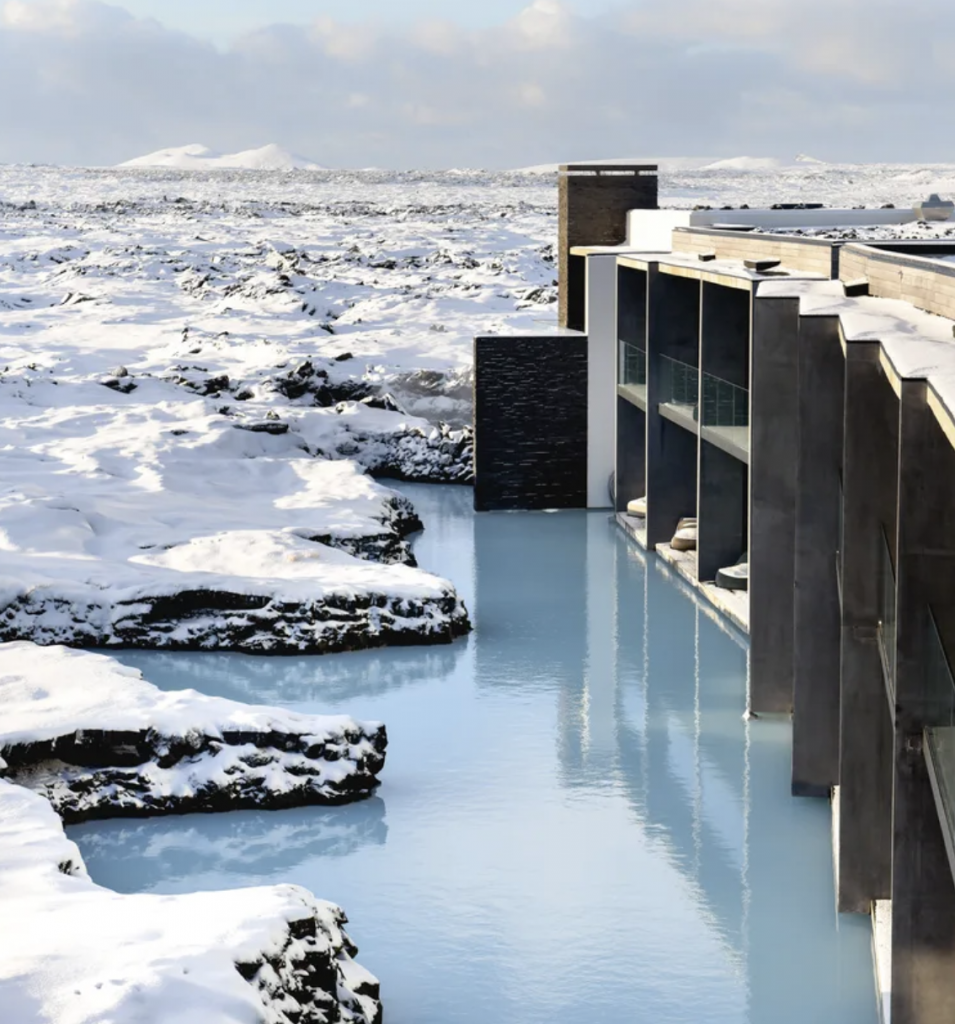A popular tourist destination and incredible landmark, the Blue Lagoon features beautiful architecture and an emphasis on its natural surroundings. This required well thought out planning to maintain natural surroundings while still developing an impressive geothermal spa. Architects continued this design as they created the Retreat at Blue Lagoon, a hotel and spa that surrounds the geothermal area, which opened in April 2018.
The complex was developed from the Illahraun lava plain and was designed and sited according to the natural formations of the lava, but there was originally no way of knowing what the lava would reveal when construction began. It became vital that the architects and engineers embarked on the project with open minds as development was subject to change.
The lava field was essentially a blank canvas, consisting primarily of a single flow from the year 1226. The striking aspect of this flow is the crater Eldbörg. The remarkable crossroads of the crater and lava flows created the formidable, fragmented plateau on the south shore of the Blue Lagoon. This enchanting expanse of moss-covered lava became the location of The Retreat.
While the architects had certain assumptions about the color, composition, rigidity, and density of the lava, they were acutely aware that this volcanic canvas was not completely blank. They knew that the confluence of convergent lava flows was bound to hold secrets that could only be revealed when the earth was excavated.
“You don’t know what to expect,” says Sigríður Sigþórsdóttir, co-founder of Basalt Architects and the project’s lead architect. “You have to be prepared for changing your design and adapting it to nature. You sometimes have to stop and rethink everything.”
Depending on the conditions of its volcanic provenance, some lava is brittle and crumbles very easily, while other lava is robust and impenetrable.
“You cannot know what the lava will reveal of itself until you have entered it,” says Sigþórsdóttir. “There was often a sense that any given location was a gamble.”
In some cases, features included in the design were not supported by the type of lava laid bare by the construction. Conversely, some lava was so unique and beautiful that it required that work be stopped so that the architects could devise a strategy for incorporating it into the design.
For Sigþórsdóttir and Basalt Architects, lava is not a tool; it is something to be honored and admired. They wanted to preserve the lava and the Illahraun lava field. This had two key benefits: it reduced the environmental impact at the construction site while enabling the architectural synthesis of large, smooth surfaces. Similarly, when they discovered geologically unique features requiring preservation, they quarried them by hand or with light machinery.
“And we know the elves did not disapprove,” says Sigþórsdóttir, jokingly. “Because nothing bad has happened.”
Preserving the bond between man and nature was the forefront of the design and construction process of The Retreat. They were guided by the principle that building and geology should become one—unified by the inspired transit of form, function, and the volcanic earth. You can learn more about The Retreat and its accommodations here.
Have you visited The Retreat at Blue Lagoon? Let us know in the comments below!


Comments
article Next
article